The foundation of proper tree maintenance begins with selecting the appropriate tree and planting it in the correct location. Should you have an existing tree, optimal tree maintenance techniques such as trimming, mulching, and removing deadwood are essential to promote the health and durability of your trees while protecting them from pests and diseases.
Trees add substantial aesthetic and environmental value to our surroundings, including shading our homes, reducing air pollution and soil erosion, and providing habitat for wildlife.
In this guide, we will delve into best practices for selecting tree stock, planting, and pruning, as well as general care to ensure the tree not only survives but thrives.
What we cover
ToggleTree Care Standards
The ANSI A300 standards, formulated by The American National Standards Institute (ANSI) and the Tree Care Industry Association (TCIA), serve as the accepted national guidelines in the U.S. for tree care practices.
It encompasses pruning, soil management, supplemental support, lightning protection, tree management during construction, planting, transplanting, integrated vegetation, root, and pest management.
These standards are aimed at arborists, tree care professionals, and urban planners, and they ensure methodological consistency and promote optimal tree health, environmental health, and community safety.
What is Arboriculture?
Arboriculture encompasses the care, management, and study of trees, shrubs, and other woody plants, honoring their significant aesthetic, ecological, and utility values.
This practice has matured through centuries, especially with the growth of urban spaces, employing various methods like prudent pruning, strategic bracing and cabling, soil aeration, careful fertilization, and diligent pest and disease management to ensure the vitality and longevity of these natural assets.
Arborists, specialists in this field, have a variety of responsibilities, including precise diagnosis and treatment of tree ailments, safe tree removal, insightful planting advice, routine maintenance, and proactive public education and advocacy for trees, ensuring they continue to flourish.
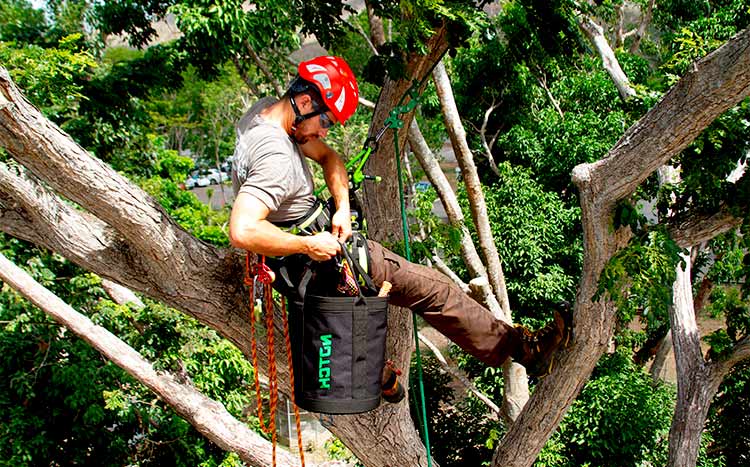
How to Select a Tree
To select the right tree, you must carefully consider and understand the following factors.
1. Function or Purpose
To select a tree, first define its primary role in your space. Trees aren’t just about aesthetics; they serve various functions:
Shade: To create a cool, shaded area, consider species with broader canopies.
Windbreak: For areas with strong winds, it may be a good idea to opt for sturdy trees with dense foliage or branching to act as natural barriers.
Ornamental: For decorative purposes, focus on trees with vibrant flowers, unique leaves, or interesting bark textures.
2. Growth Potential and Location
Considering the size and growth potential of a tree is paramount.
Size: Ensure ample space for the tree’s full-grown size, both in height and canopy spread. Crowding can stress trees and neighboring plants.
Root System: Trees with expansive root systems may not be suitable near structures or pavement, as they can cause disruptions.
3. Local Weather and Environment
Every tree has specific environmental preferences.
Temperature Tolerance: Some trees thrive in colder climates, while others prefer heat. Match the tree to your area’s average temperature range.
Water Requirements: You need to understand the water needs. Some trees are drought-resistant, while others may require regular watering.
Soil Conditions: Check your soil’s pH level and consistency. Certain trees prefer acidic soils, while others might need well-draining ground.
4. Stock Selection
The physical selection of the tree from a nursery is vital:
Tree Health: Look for trees with vibrant leaves, free from spots or discoloration. Avoid trees with visible damage or fungal growth.
Root Health: The roots should be firm, moist, and spread out. Avoid trees with circling roots.
Stable Growth: The trees should stand upright and show signs of new growth, indicating vitality.
Tree Planting
Planting trees is not just about aesthetics; it’s about cultivating a living entity. Here’s a clear roadmap to plant a tree correctly:
Step 1: Select the Right Tree for Your Location
Choosing one appropriate for your specific region and soil type is vital to planting a thriving tree. For instance, while a Pine tree might flourish in cooler regions with well-draining soil, a Palm tree prefers warmer climates and sandy soils.
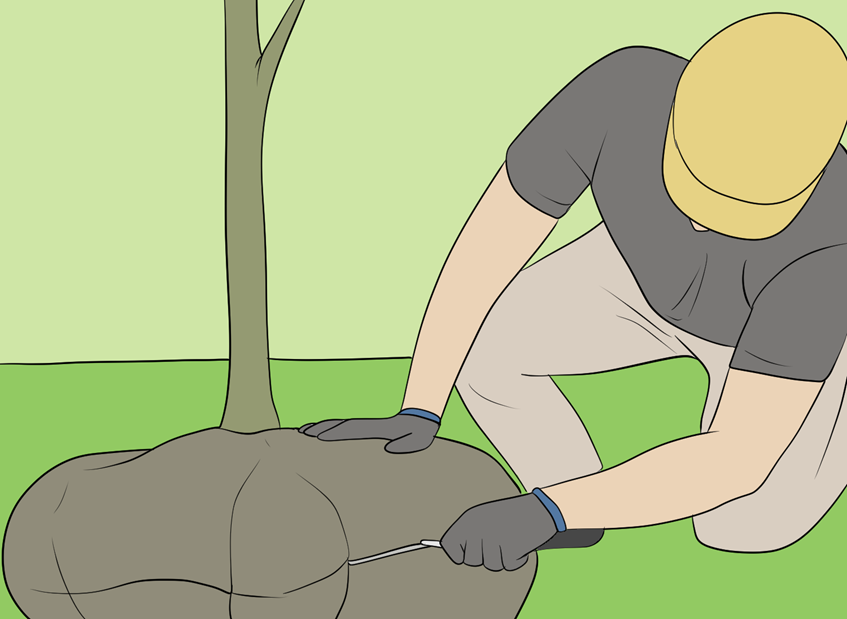
Step 2: Dig the Perfect Hole
Depth and width are crucial. Dig a hole 2-3 times wider than the tree’s root ball but no deeper than the root ball’s height. This width allows roots to spread and anchor the tree, promoting growth. Too deep, and you risk root rot; too shallow, the tree might not be adequately anchored.
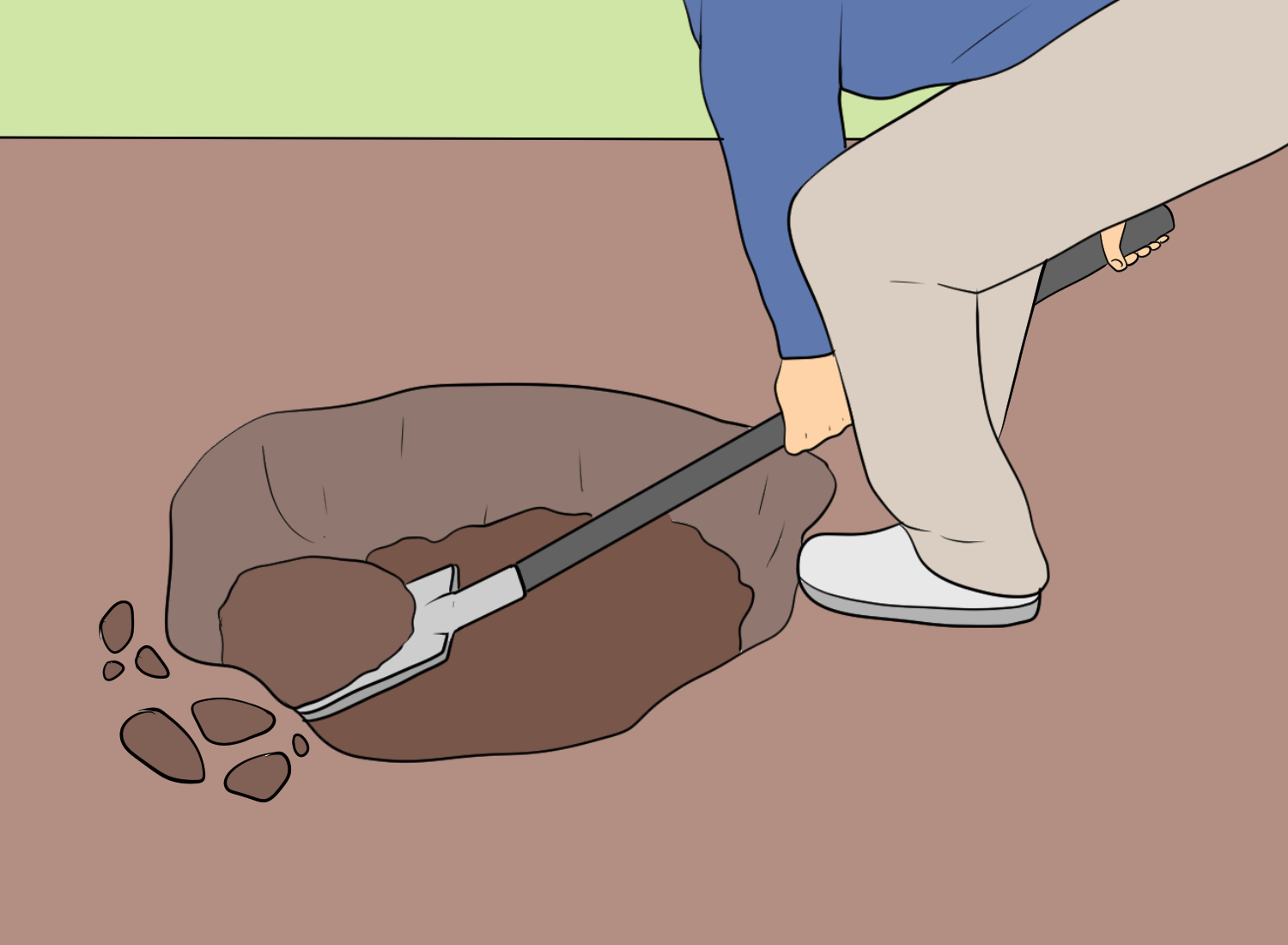
Step 3: Position the Tree and Fill
Place the tree in the center of the hole. Ensure that the top of the root ball is level with the ground surface. Fill the hole halfway with native soil, water it, then fill it. This method removes air pockets and ensures firm soil support.
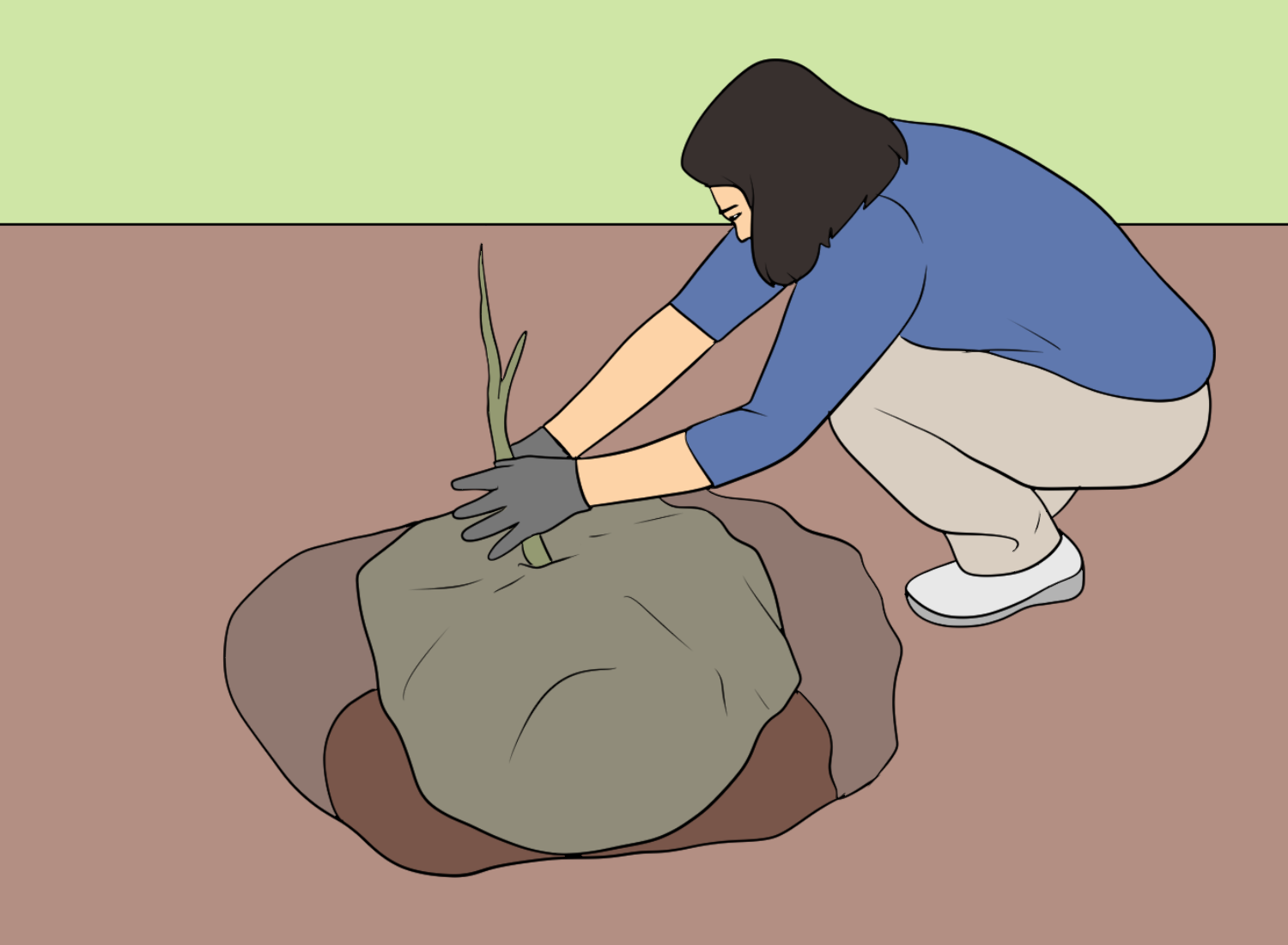
Step 4: Watering and Mulching
Water the tree immediately after planting. For the initial few weeks, you must water regularly as this helps to establish the roots. Mulch around the base, leaving a gap near the trunk, helps retain moisture, regulate temperature, and prevent weed growth.
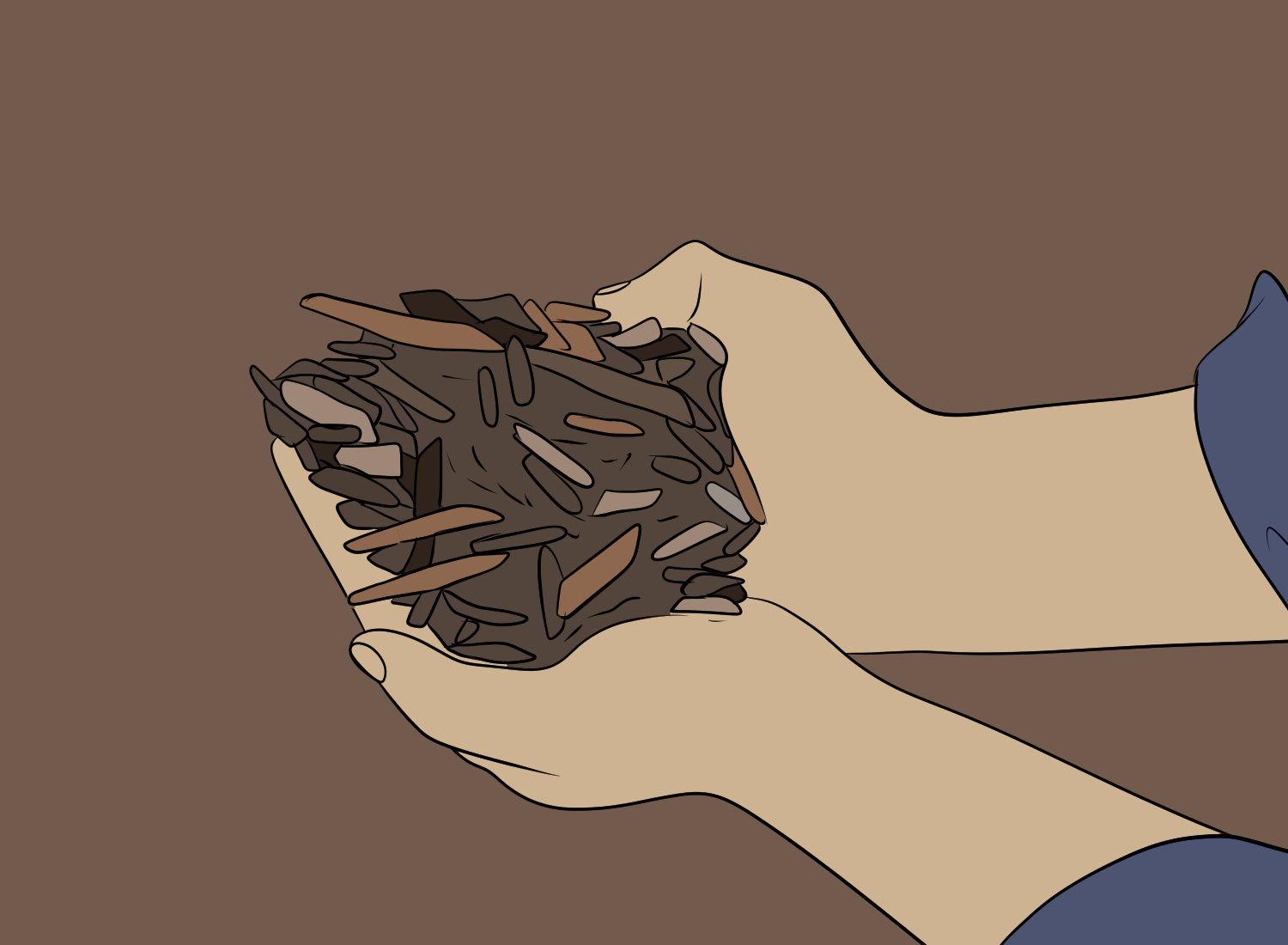
Tree Staking
Tree staking serves to secure newly planted trees and guide their growth trajectory, which is especially vital during their susceptible formative years.
This method not only offers critical structural support, ensuring trees mature upright and securely rooted but also acts as a protective shield in high-traffic or wildlife-prevalent areas, mitigating external disturbances.
The three predominant staking methods include the Single stake, providing unilateral support against dominant winds; the Double stake, offering balanced aid in areas with variable wind paths; and Guying, utilizing a tri-stake setup for added stability for larger trees.
Staking1 is recommended to be a temporary measure, typically spanning six months to two years, after which the tree should be robust enough to sustain itself without inhibiting its natural growth trajectory.
Tree Watering
Proper tree watering is essential for facilitating critical biochemical processes and maintaining cell integrity. It hinges on understanding the diverse needs of various tree species and the pivotal role of water in nutrient uptake and photosynthesis.
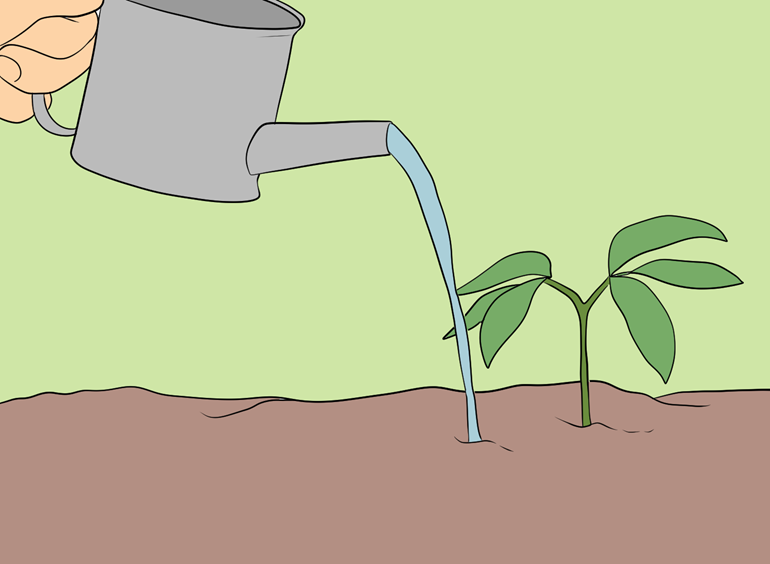
While the baseline practice suggests watering trees with 5 gallons every 3-4 days or a total of 10-15 gallons2 weekly, species-specific nuances – like the more frequent watering requirements of Deciduous trees such as Oaks and the less demanding needs of drought-resistant Cypress – dictate modifications to this general guideline.
Ensuring apt watering isn’t merely a quantitative task but a balance, as excessive watering can lead to issues like yellowing leaves, root rot, and fungal growth. Also, waterlogged soil can choke the roots, depriving them of oxygen and leading to root rot – a condition that can severely damage or even kill a tree.
Tree Watering Schedules
How to Water
To water young trees, begin by saturating the soil in a wide circumference around the tree, approximately 3 to 4 feet from the base. This technique encourages root growth, leading to a stronger foundation.
For efficient watering, utilize a soaker hose or a tree watering bag, which releases water slowly, ensuring deep root penetration.
Unlike younger trees, mature or established trees have already developed extensive root systems, enabling them to draw water from a wider area. Depth is key for mature trees. Aim for 12 inches5. Use a soil probe or a long screwdriver to assess moisture levels. If it inserts easily, the soil has sufficient moisture; if not, it’s time to water.
Water mature trees slowly and steadily ensuring a wide area is covered. Using soaker hoses is best for mature trees.
Tree Mulching
Mulching is crucial for helping trees retain water in summer and keep the ground warm in the winter. If done incorrectly, things like overmulching or mulch volcanoes can have a detrimental effect on trees, so you will need to read on to learn how to do it correctly. The best material for mulching trees is leaf litter mulch or bark mulch. Mulching serves four essential functions for tree health:
Water Retention – Mulch acts as a protective barrier, minimizing evaporation from the soil. This ensures trees have a consistent moisture supply, especially during dry spells.
Root Insulation – The layer of mulch regulates soil temperature. During scorching days, it keeps the ground cooler; on colder days, it retains heat, providing a stable environment for the tree roots.
Weed Control – Mulch suppresses the growth of weeds, which would otherwise compete with the tree for vital nutrients and water.
Soil Health – As organic mulch decomposes, it enriches the soil with essential nutrients, enhancing its quality and fertility.
How to mulch
A mulch layer of 2 to 4 inches6 is generally optimal. This thickness retains moisture effectively, insulates roots, and suppresses weeds without suffocating the tree roots. Use the same thickness for new saplings and mature trees. Keep mulch away from the trunk to avoid collar rot, and don’t mulch beyond the drip line.
Step 1: Prepare the Area
Clear the area around trees by removing weeds and debris.
Water the soil if it is dry.
Step 2: Apply the Mulch
Apply a 2-3 inches7 thick layer around the tree if you use organic mulch.
Remember not to pile mulch directly against tree stems or trunks to avoid rot and pest issues. Don’t apply any further out than the dripline.
Step 3: Maintain the Mulch
Replenish organic mulch periodically as it decomposes over time.
Keep an eye out for pests and remove any weeds that sprout.
Step 4: Seasonal Care
Pull back mulch from perennials and bulbs in the spring for shoots to emerge.
In the fall, add additional mulch to protect plants from winter cold.
While Mulching is beneficial, excessive mulching can harm trees. Over-mulching can:
- Cause root suffocation
- Create a moist environment for fungi and tree diseases
- Encourage rodents that can chew on the tree’s bark
Always monitor the mulch’s state, and if it’s compacted or forming a water-repellent layer, it may need replacement or aeration.
Tree Fertilization
Tree fertilization is the process of providing additional nutrients to trees to enhance their growth and overall health.
This necessity stems from the natural depletion of vital nutrients in the soil, where fertilization steps in to enhance a tree’s resistance to diseases and pest infestations while promoting robust growth.
Employing various materials such as macronutrients, micronutrients, and both inorganic and organic fertilizers, this practice navigates through the intricacies that trees – irrespective of their age and species – receive apt nutrients.
It is important to note that the frequency and amount of fertilization are contingent upon several factors, including tree age, species, and soil health.
Methods of fertilizer application vary from broadcasting to utilizing fertilizer stakes, deep root fertilization, and foliar sprays.
The efficacy of fertilizer applications can be gauged through visible signs of vigorous growth, enhanced leaf coloration, augmented resilience, and improved root health.
Young Trees
Young trees, much like infants, require specialized attention and care to navigate their critical initial years, ensuring they mature into robust, healthy specimens.
A strategic bi-annual fertilization schedule, implemented each spring and fall, acts as a catalyst, fortifying their growth and enhancing resilience against potential diseases and pests by meeting their heightened nutrient demands.
Optimal fertilization options include renowned brands like Miracle-Gro Tree & Shrub Plant Spikes and Jobe’s Tree Fertilizer Spikes, yet natural methods such as composting and utilizing worm castings also stand out for their remarkable efficiency in nourishing the saplings.
Aligning fertilization efforts with the commencement of the growth phase in spring and the preparatory phase for winter during early fall ensures that the young trees are adequately supported throughout crucial seasonal transitions.
Mature Trees
Mature trees, despite their established root systems, need fertilization to counteract potential nutrient limitations from various environmental and soil conditions.
Generally, mature trees benefit from an annual fertilization schedule, preferably during their dormant season or early spring. These trees may exhibit signs such as pale leaves or reduced growth as indicators of nutrient deficiencies.
To fertilize mature trees, you can use slow-release, high-nitrogen fertilizer with the precise mix determined by trees and soil needs. It can be applied through surface scattering or deep root injection, which is often a task for professionals.
While the primary fertilization is ideally conducted in early spring, those in notably nutrient-poor soils or exhibiting signs of stress may warrant an additional application in late fall.
To gauge the effectiveness of your fertilizer application, you should observe factors such as improved growth rate, lusher foliage, increased resilience to diseases and pests, and enhanced production of flowers or fruit.
Tree Pruning and Trimming
Tree pruning and trimming, while aesthetically enhancing, is vital in preserving the tree’s health and safeguarding its surroundings.
Pruning is a strategic practice aiming to bolster the tree’s health and vitality by selectively eliminating branches to mitigate disease risk and spur fruit or flower production.
On the other hand, trimming primarily focuses on maintaining a tree’s visual appeal and safety, curtailing overgrown branches to uphold its shape and prevent potential hazards, especially near power lines and buildings.
Both practices serve distinct, crucial roles in ensuring a tree’s structural integrity, aesthetic value, safe coexistence with nearby structures, and optimizing light penetration to promote balanced undergrowth and foliage health.
Canopy Thinning
Canopy thinning involves selectively removing branches from a tree’s canopy, facilitating more sunlight penetration, improving air circulation, and mitigating weight on heavy limbs, thereby enhancing the tree’s overall health and structural integrity.
This process strategically omits weaker or overcrowded branches, ensuring the remaining ones receive adequate sunlight and nutrients while simultaneously reducing the prevalence of diseases by minimizing moisture retention and promoting efficient nutrient utilization among the remaining branches.
While the primary benefits include optimized sunlight absorption and a tangible reduction in disease incidence, canopy thinning also bestows aesthetic and safety, and for fruit-bearing trees, productive advantages by presenting a neat appearance, minimizing risks of branch fall, and potentially boosting fruit production, respectively.
Canopy thinning is typically performed every 1-2 years8, and younger trees might require more frequent thinning to establish a strong branching structure, contrasting with mature trees requiring less frequent interventions.
Canopy Lifting
Canopy lifting involves the selective removal of a tree’s lower branches and it brings along with it many benefits, such as enhancing safety by mitigating potential obstructions, particularly in pedestrian or vehicular zones.
Not only does this method enhance a tree’s aesthetic appeal by offering a neat, manicured appearance and highlighting its structural beauty, but it also augments sunlight penetration to understorey vegetation, subsequently boosting its growth.
Additionally, canopy lifting promotes the tree’s overall health by eliminating potentially weak or diseased lower branches, directing energy towards the stronger, healthier ones, and facilitating better land utilization beneath the tree.
The technique demands a strategic approach to branch removal, necessitating clean cuts with sharp tools and a discerning eye toward maintaining the tree’s balance and health while respecting its age, health, and natural shape.
Crown Reduction
Crown reduction refers to reducing the size of a tree’s crown while maintaining its natural shape and integrity. It’s different from tree topping, which indiscriminately cuts tree branches and can harm the tree’s health.
This method involves identifying key branches, performing selective pruning with 45-degree angled cuts, and adhering to a 10-15% annual canopy reduction guideline to stimulate new growth without overwhelming the tree.
The strategic approach not only enhances visual appeal by creating a well-proportioned aesthetic in line with its environment but also actively promotes robust growth and ensures safety by mitigating potential risks of falling branches during adversities like storms.
Moreover, a gracefully reduced crown complements its landscape, potentially elevating the property’s curb appeal and market value by introducing a harmonious and balanced visual experience.
Dead Wood Removal
Deadwood removal involves eliminating dead branches or limbs from trees. This practice is more than just a cosmetic procedure; it’s a proactive approach to fostering tree health and safeguarding surroundings.
This procedure prevents potential decay-producing fungi from infecting the tree and also redirects the tree’s resources toward healthy growth, enhancing its resistance to pests and diseases.
Deadwood removal visibly improves the lushness and vibrancy of trees and mitigates the risk of falling branches, ensuring a safe environment for individuals and properties.
Tree Removal
While preservation is always the top priority, there are moments when the difficult decision of tree removal has to be taken, triggered by various indicators such as evident death or decline, posing hazardous conditions, revealing signs of disease or infestation, or causing structural concerns in proximity to buildings and pathways.
Choosing an appropriate tree removal method is also crucial. While DIY is viable for smaller, non-hazardous trees with the right tools and knowledge, employing professional tree care services ensures the safety, efficiency, and handling of complex removal scenarios effectively.
While preservation is always a top priority, there are moments when removal becomes essential to ensure safety, protect other plants, or maintain the aesthetics of a landscape.
Tree Care Services
Specialized tree care services are pivotal in ensuring urban trees navigate the challenging terrains and conditions of city life, promoting their health, growth, and safety amidst the concrete jungle.
These experts manage trees vying for space amidst city infrastructures with a comprehensive understanding of managing these vital green giants, ensuring they beautify cities while maintaining a healthy ecosystem.
Arborists are indispensable in safeguarding and optimizing the well-being and aesthetic of our urban forests, from conducting specialized trimming in confined spaces and ensuring safe tree removal amid tight urban settings to meticulous health assessments of trees grappling with pollution and constrained growth.
Tree Pest Control
Tree pest control involves the strategic identification, prevention, and treatment of harmful organisms that compromise tree health, and it is typically executed by professional arborists with a rich knowledge base in dendrology.
Key pests like aphids, emerald ash borers, tent caterpillars, and scale insects present notable threats, each combated with specific treatments ranging from insecticidal soap sprays and systemic insecticides to biological controls and physical removal strategies.
Effective pest management hinges on adept treatment and proactive practices such as regular tree inspections and fostering a biodiverse garden ecosystem to naturally ward off pests, safeguarding tree vitality from root to canopy.
Tree Disease Treatment
Tree disease treatment involves the diagnosis, management, and mitigation of harmful tree pathogens and pests. It’s not just about healing; it’s a proactive measure to ensure the tree’s growth remains unhindered.
Certified arborists are dedicated professionals who diagnose and treat various tree diseases, ensuring optimal care with their expertise and experiential knowledge.
Apple scab, Oak wilt, and Dutch elm disease stand out among the myriad of tree diseases for their widespread occurrence and detrimental impact, and this necessitates a strategic combination of chemical treatments, precise pruning, and occasionally total tree removal to hinder further spread.
Disease Prevention
As the adage goes, “An ounce of prevention is worth a pound of cure,” especially in tree care.
Techniques to prevent tree diseases include conducting regular inspections to identify early indicators of stress or damage and employing prudent pruning of dead or unhealthy branches using sanitized tools to mitigate infection spread.
Other methods for preventing tree diseases include judicious application of a protective mulch layer, disease-resistant tree varieties, routine soil testing to maintain nutrient-rich substrates, and applying fungicides and pesticides sparingly.
Furthermore, while planting, adequate spacing between trees is pivotal to minimize resource competition and impede the effortless transmission of diseases.
Tree Root Care
Tree root care involves activities and practices aimed at maintaining healthy tree roots and, by extension, promoting the overall well-being of the tree.
Tree roots serve multiple critical functions for the tree’s survival and growth. They anchor the tree, preventing it from toppling over. Simultaneously, they absorb essential nutrients and water from the soil, fueling the tree’s growth and health.
An adequately cared-for root system ensures the tree can withstand environmental stressors like storms, pests, and diseases. When the roots are healthy, it reflects in the tree’s foliage, bark, and overall vigor.
Soil Testing
Soil testing is one of the most revealing methods to gauge a tree’s well-being.
It is a strategic, data-driven method that provides in-depth insights into the physical and chemical conditions of the soil, linking the visible health of a tree to the unseen nutrients it absorbs.
Soil testing is typically done by certified arborists or trained professionals from tree care services. These experts utilize specialized equipment to extract soil samples from varying depths, depending on the tree’s age, size, and type. The samples are then sent to laboratories, where they undergo detailed analysis.
The resulting data – encompassing nutrient levels, pH values, and organic matter content – provides a precise breakdown that enables tailored nourishment and corrective actions.
For example, should a soil test reveal nitrogen deficiency or a pH imbalance, precise interventions, like the application of a specific fertilizer, can be implemented to optimize tree health and growth while minimizing resource waste.
Soil Aeration
Soil Aeration primarily involves perforating the soil with small holes, allowing air, water, and essential nutrients to penetrate the tree roots.
It counteracts the challenges posed by soil compaction – often a result of foot traffic and natural settling – which restricts root expansion and nutrient access, potentially leading to stunted growth and heightened disease vulnerability.
Soil aeration is typically performed by certified arborists or tree care specialists, who utilize specialized tools and expertise to avoid root damage.
Effective soil aeration enhances root growth, improves nutrient and water uptake, increases disease resistance, and promotes beneficial soil microorganisms, thereby ensuring trees not only survive but robustly thrive amidst environmental challenges.
Arborist Inspections
Arborist inspections involve a qualified tree specialist, known as an arborist, examining trees to assess their health, stability, and safety.
These inspections are crucial for early identification and intervention regarding diseases or pests, and also for scrutiny of structural stability for pinpointing and mitigating any concealed decay or damage, ensuring both the tree and its surrounding environment are safe.
These inspections are also pivotal in development application approvals. Providing a detailed report is often requisite for construction or landscaping projects to ensure the well-being of green assets.
Ultimately, an arborist inspection facilitates informed decision-making, equipping tree owners with insightful, evidence-based knowledge to navigate choices regarding pruning, possible removal, and overall tree care.
Tree Cabling
Tree cabling is a technique of installing flexible steel strand cables between major limbs to reduce strain and support the tree. Think of it as providing a safety net for your tree, giving branches a backup system when they’re under stress from harsh weather conditions or their weight.
This technique is particularly important for trees exhibiting structural frailties, such as those with V-shaped or split trunks, those advancing in age, or those recovering from damage due to storms or other physical impacts.
Cabling is also a preventive measure, ensuring the stability of trees in proximity to structures or public spaces to prevent unpredictable limb fall, and preserving trees that hold significant historical, environmental, or sentimental value, thus securing these natural treasures for subsequent generations.
Tree Bracing
Tree bracing is a supportive technique employing rigid rods to fortify weakened or damaged trees. This method primarily focuses on reinforcing tree structure, ensuring stability, and prolonging the tree’s life.
The need for tree bracing usually arises under three circumstances: structural weakness often found in trees with co-dominant stems, aiding recovery after sustaining damage, and preserving trees of historical or sentimental value.
Tree bracing provides a pragmatic solution to maintain and safeguard valuable trees by identifying and appropriately addressing these situations.
Conclusion
Caring for trees is not a one-time act but a lifelong commitment. It’s akin to nurturing a relationship, requiring patience, understanding, and timely intervention.
Whether you’re a novice gardener or a seasoned arborist, continuously updating your knowledge and techniques is vital. Trees, with their silent wisdom, offer back manifold – from cleaner air and cooler climes to the intangible sense of serenity they bestow.
- Greenvistava, (2020) Why, When & How to Stake a Newly-Planted Tree. <https://greenvistava.com/tree-staking-faqs/> Accessed: 19-03-2024
- Treena, (2015) How much and how often to water. <https://www.ourcityforest.org/blog/2015/2/26/the-ultimate-watering-guide> Accessed: 19-03-2024
- Deborah Benge Frost, (2012) Formula calculates how much water each tree needs. <https://www.mrt.com/lifestyles/article/Formula-calculates-how-much-water-each-tree-needs-7432435.php> Accessed: 19-03-2024
- Sactree, (2022) How to water young trees. <https://sactree.org/tree-care-tips/how-to-water-trees/> Accessed: 19-03-2024
- Teresa Odle, (2020) How To Water Mature Trees. <https://plantaddicts.com/how-to-water-mature-trees/> Accessed: 19-03-2024
- Holly Honeycutt, (2023) How to Landscape with Mulch. <https://www.lowes.com/n/how-to/landscaping-with-mulch> Accessed: 19-03-2024
- Gene Canallero, (2023) How thick should I mulch my beds? (Mulch Depth 101). <https://www.yourgreenpal.com/blog/how-thick-should-i-mulch-my-beds> Accessed: 19-03-2024
- JRP Services, (2023) Crown & Canopy Thinning. <https://www.jrpservices.net/crown-canopy-thinning/> Accessed: 19-03-2024



